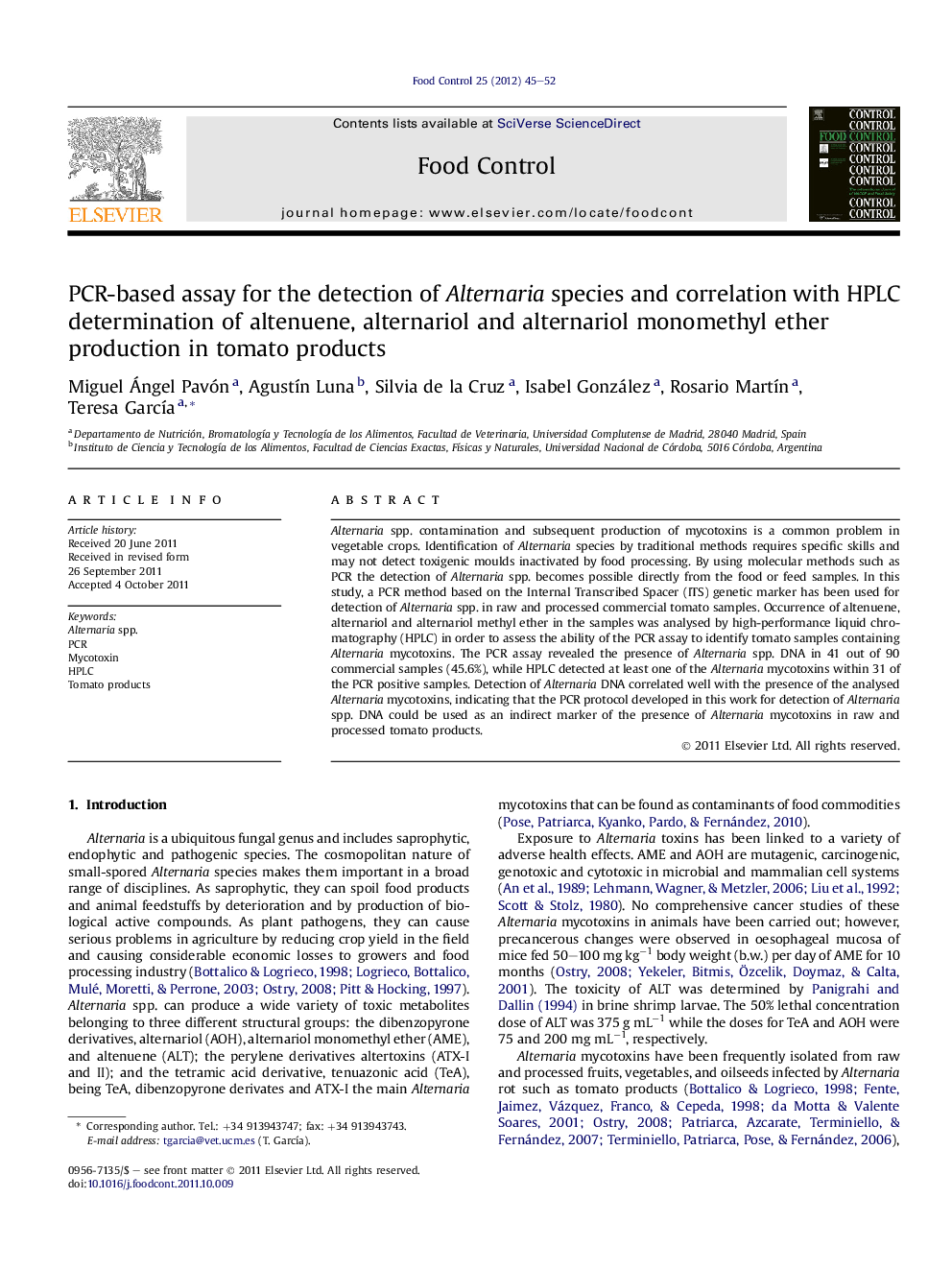| Article ID | Journal | Published Year | Pages | File Type |
|---|---|---|---|---|
| 6394058 | Food Control | 2012 | 8 Pages |
Alternaria spp. contamination and subsequent production of mycotoxins is a common problem in vegetable crops. Identification of Alternaria species by traditional methods requires specific skills and may not detect toxigenic moulds inactivated by food processing. By using molecular methods such as PCR the detection of Alternaria spp. becomes possible directly from the food or feed samples. In this study, a PCR method based on the Internal Transcribed Spacer (ITS) genetic marker has been used for detection of Alternaria spp. in raw and processed commercial tomato samples. Occurrence of altenuene, alternariol and alternariol methyl ether in the samples was analysed by high-performance liquid chromatography (HPLC) in order to assess the ability of the PCR assay to identify tomato samples containing Alternaria mycotoxins. The PCR assay revealed the presence of Alternaria spp. DNA in 41 out of 90 commercial samples (45.6%), while HPLC detected at least one of the Alternaria mycotoxins within 31 of the PCR positive samples. Detection of Alternaria DNA correlated well with the presence of the analysed Alternaria mycotoxins, indicating that the PCR protocol developed in this work for detection of Alternaria spp. DNA could be used as an indirect marker of the presence of Alternaria mycotoxins in raw and processed tomato products.
⺠A PCR method has been used for detection of Alternaria spp. in foodstuffs. ⺠Occurrence of Alternaria mycotoxins in the samples was analysed HPLC. ⺠A good correlation was found between detection of Alternaria DNA and mycotoxins. ⺠The PCR method could be used to predict the presence of Alternaria mycotoxins.
